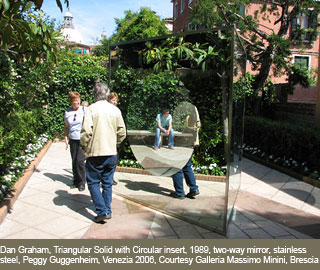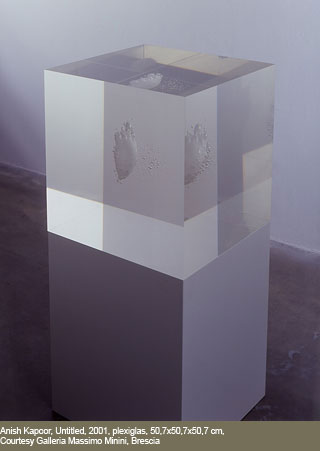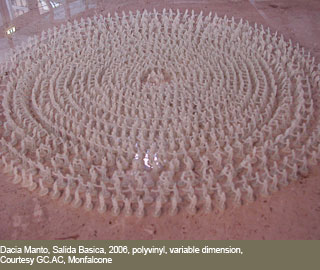Intelligible Materials
ŌĆ£the aforementioned substances, which we called immaterial, must also be intellectual. Indeed a thing is intellectual since it is immune to material, as can be conceived by the intelligible itself.ŌĆØ (Thomas Aquinas, Compendium Theologiae, I, 50)
In Ascent of the Blessed (1504) Hieronymus Bosch portrays a group of souls rising up towards heaven: perceivably losing the burden of bodily weight, they reach a luminous cylinder at the top of which the shadows of the blessed intent on making the last effort before they can ascend to divine contemplation. Even today the canvas is still surprising, with an unusual economy of means, the painter represented a mystical experience in an extremely realistic way, focusing particular attention both in stressing the unburdening of the bodies and giving an abstract dimension to the divine light. Physicality and light, two characteristics which mark the concept of transparency connected to an experience of a mystical nature. At least this was so until the advent of technology and the introduction of plastic materials in the visual research of the avant-garde. Innovation and the conception of tools in material terms, to which we must also add that degree of intelligibility which Aquinas reminded us of, that degree of self-aware conceptuality so dear to the century which has just passed.
Dematerialisation, atomisation, wearing-out, transparency: different symptoms, but the diagnosis is always the same, the crisis of the object marks the start of contemporary art. In actual fact, the crisis of the object is at the same time a crisis of the subject. As Merleau-Ponty points out, the process of vision is closely connected to objectifying thought. The nominal acquisition of the visible world, the sense of sight is the main ally for a scientific approach, the means of choice for reading signs and objects. In the nineteen-sixties glass and plastic could be used in an organic manner or as the conceptual surface of choice. The following are three examples of this: in 1963, in a project which was never actually made, titled Ipotesi di una mostra, Giulio Paolini divided the volume of a room into two halves by inserting a glass pane.  Visitors, divided in two groups, were themselves the content of the show, one being the artwork for the other. A factual mirroring of a conceptual nature which would be reasserted twenty years later by Dan Graham when he made Two Adjacent Pavillons in 1982. The work was made up of two modules covered on each side by mirrored glass, they were identical and could be used both from the inside and the outside of the structure. The only difference was the ceiling: one was in transparent glass and the other in a dark material which didn't let light pass through. The properties of mirrored glass meant that at any one time one side was more reflective or transparent than the other. During the day the opaque ceiling didn't allow the sunlight to illuminate the inside of this pavilion, those outside it saw nothing inside, but saw themselves and the surroundings mirrored in the glass. In the other pavilion the sun directly hit the inner walls which thus reflect more light than the outside ones: those outside could see the inside very well, but those inside mainly saw their own image reflected in the glass. ŌĆ£Differently from the outdoors minimal art formalist structures, the pavilions are psychologically and socially self reflective. They imply a dialectic between the viewer and the image they have of themselvesŌĆØ the artist declared. Eva HesseŌĆÖs research took a completely different route. Her objects are built on the fragmentation and dispersion of all concepts of uniqueness and fixedness. The principle of indeterminateness was first outlined in Repetition Nineteen III in 1968, made up of 19 translucent fibreglass elements in the shape of bizarre and irregular ŌĆ£glassesŌĆØ could be freely placed on the floor, free from a pre-defined order. This principle was fully realised in a poetics in which latex, artificial fibres and polyester filaments follow a precise organic and vital configuration.
Visitors, divided in two groups, were themselves the content of the show, one being the artwork for the other. A factual mirroring of a conceptual nature which would be reasserted twenty years later by Dan Graham when he made Two Adjacent Pavillons in 1982. The work was made up of two modules covered on each side by mirrored glass, they were identical and could be used both from the inside and the outside of the structure. The only difference was the ceiling: one was in transparent glass and the other in a dark material which didn't let light pass through. The properties of mirrored glass meant that at any one time one side was more reflective or transparent than the other. During the day the opaque ceiling didn't allow the sunlight to illuminate the inside of this pavilion, those outside it saw nothing inside, but saw themselves and the surroundings mirrored in the glass. In the other pavilion the sun directly hit the inner walls which thus reflect more light than the outside ones: those outside could see the inside very well, but those inside mainly saw their own image reflected in the glass. ŌĆ£Differently from the outdoors minimal art formalist structures, the pavilions are psychologically and socially self reflective. They imply a dialectic between the viewer and the image they have of themselvesŌĆØ the artist declared. Eva HesseŌĆÖs research took a completely different route. Her objects are built on the fragmentation and dispersion of all concepts of uniqueness and fixedness. The principle of indeterminateness was first outlined in Repetition Nineteen III in 1968, made up of 19 translucent fibreglass elements in the shape of bizarre and irregular ŌĆ£glassesŌĆØ could be freely placed on the floor, free from a pre-defined order. This principle was fully realised in a poetics in which latex, artificial fibres and polyester filaments follow a precise organic and vital configuration.
 Even though the object has always had a meaning which overcomes the purely functional dimension, the recent interest in the subtle body of artefacts makes one think that this problem is particularly pertinent to our information society, in which the de-materialisation is just as important, if not more important than, physical and concrete things. Two encounter between two different generations: Anish Kapoor and Dacia Manto.
Even though the object has always had a meaning which overcomes the purely functional dimension, the recent interest in the subtle body of artefacts makes one think that this problem is particularly pertinent to our information society, in which the de-materialisation is just as important, if not more important than, physical and concrete things. Two encounter between two different generations: Anish Kapoor and Dacia Manto.
For Kapoor, the surface quality is a source of unending investigation: ŌĆ£the skin, the external surface, was for me always the place where the action happened. It is the moment of contact between the object and the world, the film which separates the inside from the outsideŌĆØ. For the Anglo-Indian artist the epidermis is the moment of tension and action for an artwork. It is the place in which we perceive the change. The works are the configuration of objects or better places. They invade space and absorb it to the point that it becomes part of the work itself. Thinking of couples of opposites, the couple of interior/exterior plays a very important role, particularly in the light of the artistŌĆÖs increasing interest in the themes of revelation and dissimulation. He works with reflective surfaces, creating mirrors which deform or even cancel out the image itself, as in Double Mirror, 1997; or swallow it down towards vertiginous depths as in Turning the World Upside Down, 1995 or Suck, 1998. "My work is a struggle, an unending fightŌĆØ, he stated. His works are related to material, they transform it and deform it- in the literal sense of depriving it of a form. All the major production of the artist in this period consisted in the staging of the void, a void made tangible by a cavity which is filled, or by a matter which is hollowed out. KapoorŌĆÖs work consists in the revelation of an inner apparition which is innate to the material and in an original making of the work aiming at the staging of a deep reality which is perceivable in a transition, in a passage, in an oblique vision. It is a large deforming mirror ready to stage the time of experience, reflecting nature in a single surface.
 On the other hand, Dacia Manto offers a different sensorial speculation, referencing things for an intimate knowledge of the world and analogies as a descriptive route. The artist crosses over the tactile knowledge of nature, extracting its essence and its content through the exercise and the manual skill of the execution and the slow building and manifestation of things, with an almost musical nature. An imperceptible rhythm, an organic musical score, becomes a style code, the defining characterising element for a working method which is poor in its materials, but often baroque and virtuoso in its principles. In this kind of economy, light is the favoured reference, the record of a primary vibrating flux, the building blocks, as it is the symbol of a hidden, throbbing energy.
On the other hand, Dacia Manto offers a different sensorial speculation, referencing things for an intimate knowledge of the world and analogies as a descriptive route. The artist crosses over the tactile knowledge of nature, extracting its essence and its content through the exercise and the manual skill of the execution and the slow building and manifestation of things, with an almost musical nature. An imperceptible rhythm, an organic musical score, becomes a style code, the defining characterising element for a working method which is poor in its materials, but often baroque and virtuoso in its principles. In this kind of economy, light is the favoured reference, the record of a primary vibrating flux, the building blocks, as it is the symbol of a hidden, throbbing energy.
MantoŌĆÖs is a rhizomatic perspective, perpetually swinging between the organic and the physiological, carried with lightness. As Novalis, a philosopher who has an affinity with the thinking outlined above, stated ŌĆ£the poet ends in the way he starts the impulse. Whilst the philosopher merely gives an order, a layout, let the poet loosen any ties. His words are not general signs- they are sounds- magic words which move beautiful ranks around themŌĆØ.

